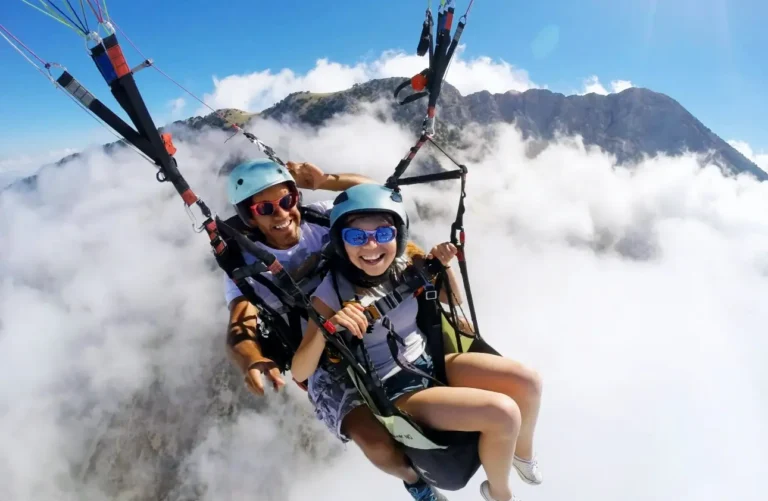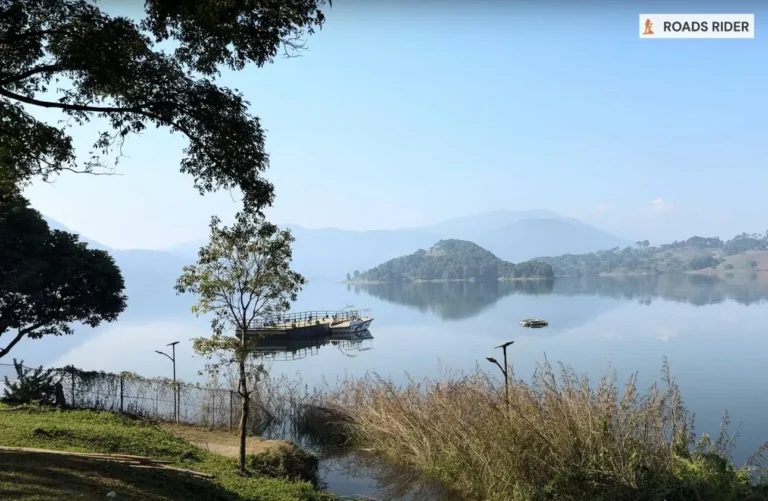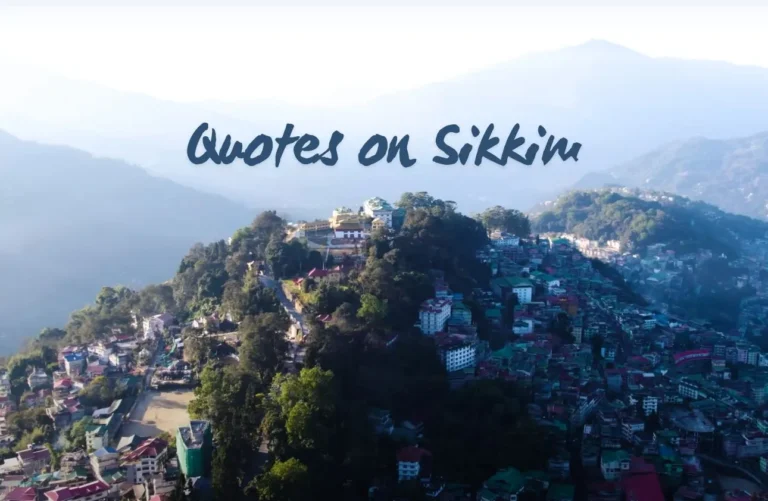Kedarnath Yatra: A Complete Detailed Guide for 2025
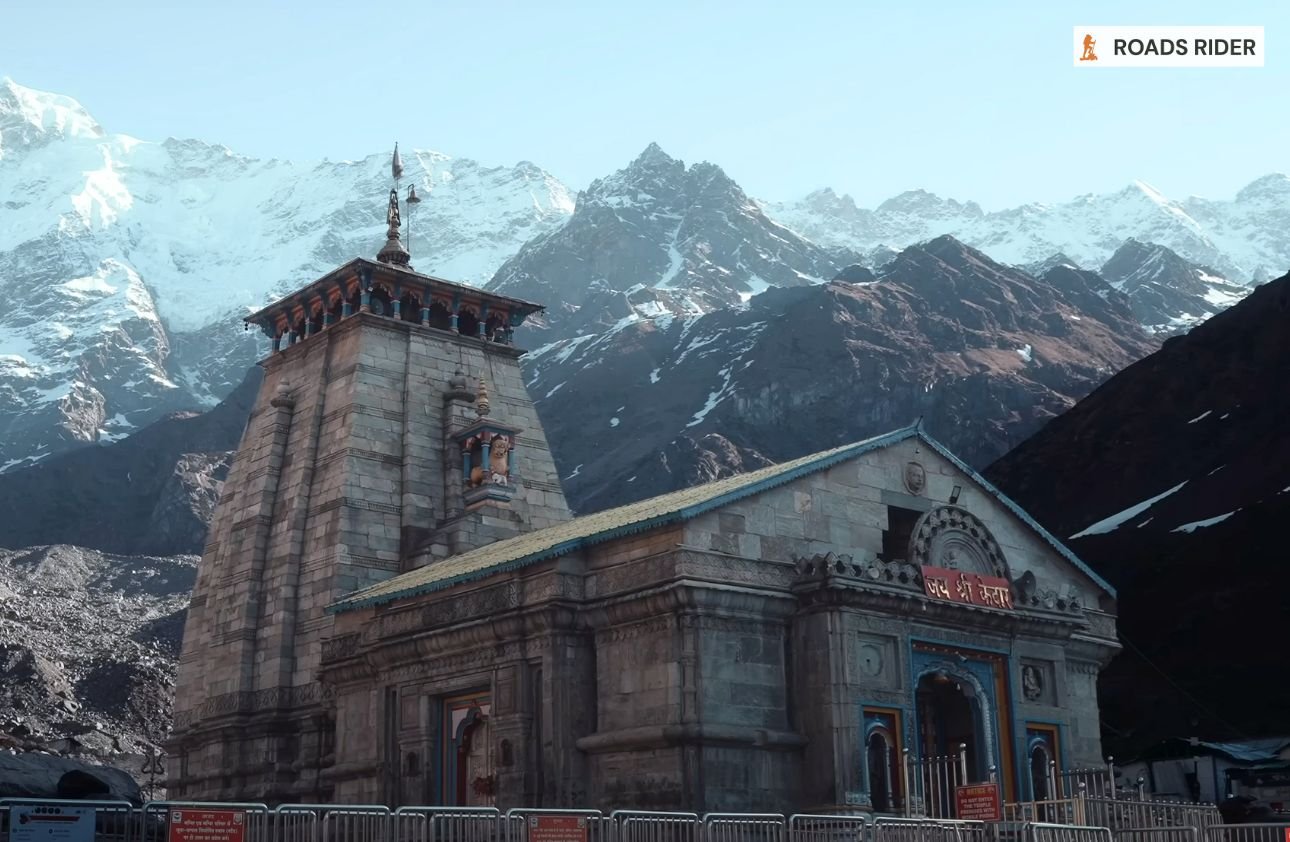
The Kedarnath Yatra is not just a journey; it’s a spiritual awakening set against the majestic Himalayan backdrop. Situated at an altitude of 3,583 meters in the Rudraprayag district of Uttarakhand, Kedarnath Temple is one of the holiest shrines dedicated to Lord Shiva and a vital part of the Char Dham pilgrimage.
Every year, thousands of devotees and adventure seekers undertake the challenging yet deeply rewarding Kedarnath trip. If you’re planning your Kedarnath Yatra in 2025, this comprehensive guide will walk you through every detail — from planning your route and trek to estimating your Kedarnath trip cost.
Kedarnath Temple’s Spiritual & Historical Significance
The origin of Kedarnath is deeply rooted in Indian mythology. According to legends, after the Mahabharata war, the Pandavas sought absolution from Lord Shiva for the sins of fratricide and war. Shiva eluded them by taking the form of a bull and disappearing into the mountains of Kedarnath.
When discovered, he vanished into the earth, leaving behind his hump—now enshrined in the temple. The remaining parts of Shiva’s body are said to have appeared in other places, forming the Panch Kedar.
Kedarnath Temple is one of the twelve Jyotirlingas of Lord Shiva. It is believed that the temple was originally constructed by the Pandavas and was later revived by Adi Shankaracharya in the 8th century.
Built from massive stone slabs, the structure has withstood natural disasters, including the devastating 2013 floods, which only enhanced its divine aura in the eyes of devotees.
The temple is open only during a specific time of the year due to extreme weather, making the Kedarnath Yatra a seasonal pilgrimage. Surrounded by serenity and mythological significance, this spiritual destination is a must-visit for every devout Hindu.
- Location: Rudraprayag district, Uttarakhand
- Altitude: 3,583 meters (11,755 feet)
- Season: Open from May to October (exact dates vary annually based on the Hindu calendar)
- Special Status: 12 Jyotirlingas of Lord Shiva
Why Kedarnath is One of the 12 Jyotirlingas
Kedarnath holds a special position as one of the 12 Jyotirlingas — the holiest Shiva shrines spread across India. The term “Jyotirlinga” translates to “pillar of light,” signifying the manifestation of Shiva as an infinite cosmic pillar of energy.
Among all Jyotirlingas, Kedarnath is the most remote and high-altitude shrine, which adds to its spiritual gravity. It is believed that worshipping all 12 Jyotirlingas grants moksha (liberation), and Kedarnath is especially revered for its link with penance and divine forgiveness.
Many sages believe that the vibration in Kedarnath resonates with Shiva’s raw cosmic energy and that meditation here opens pathways to higher consciousness. Pilgrims often experience not just the sense of religious fulfilment but an inner transformation.
Temple Timings, Rituals & Darshan Protocols
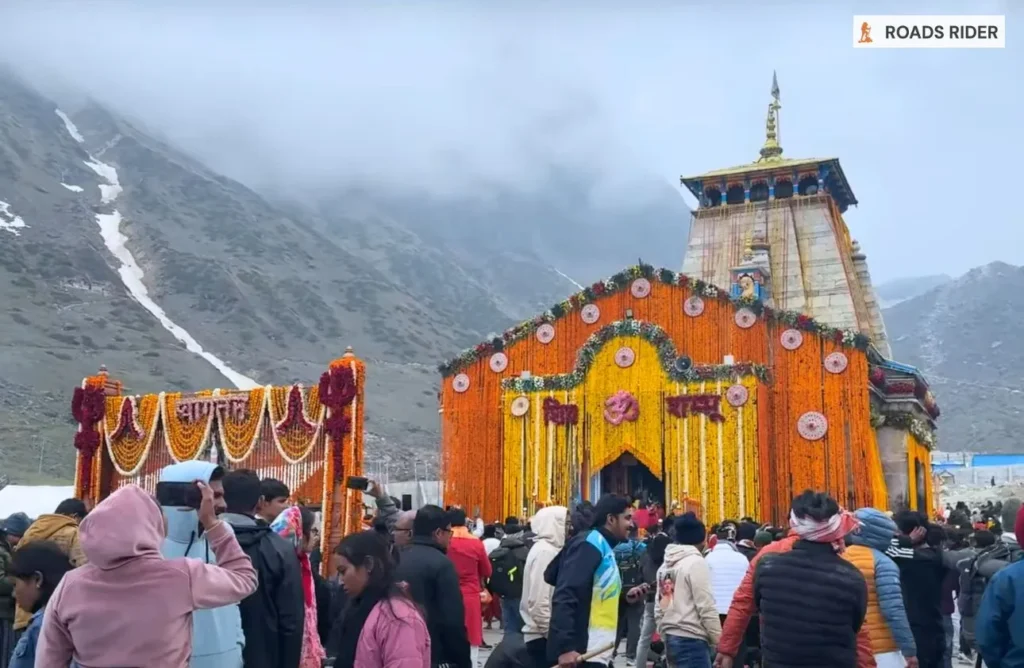
Kedarnath Temple opens around 4:00 AM with the Abhishek puja, and closes by 9:00 PM. The temple follows strict spiritual protocols and timing schedules.
- Pujas and Offerings:
- Rudrabhishek, Mahabhishek, Laghu Rudra available for advance booking
- Offerings can be purchased from authorised shops near the temple
(You can book these at the temple counter or via official tourism portals)
- Timings:
- Opens at 4:00 AM (Abhishek)
- Closes at 9:00 PM
- Entry to the sanctum is subject to queues, especially during peak hours
- Darshan Protocols:
- Only Hindu devotees are allowed into the sanctum.
- Dress modestly — avoid shorts or revealing clothes.
- Photography is strictly prohibited inside the temple.
- Remove leather goods, belts, and footwear before entering.
- Maintain silence and reverence, especially during aarti and bhog.
Note: Due to high footfall during peak season, expect long queues and security checks. Senior citizens or physically challenged devotees are advised to take assistance or consider helicopter access with early morning slots.
Planning for Kedarnath Trip
Planning your Kedarnath trip properly is the key to a smooth and fulfilling experience. Here’s everything you need to know before you go.
Best Time to Visit
The Kedarnath Temple is open only during the summer months, typically from early May to late October. The opening and closing dates vary yearly and are determined according to the Hindu calendar.
- Ideal Time:
- Late May to Mid-June: Clear weather, ideal for trekking
- September to Mid-October: Post-monsoon freshness and lighter crowds
- Avoid:
- July to August: Heavy monsoon rains lead to frequent landslides and treacherous trekking conditions
Pilgrims are advised to check official announcements by the Uttarakhand Char Dham Devasthanam Board for updated yatra timings and weather conditions.
Kedarnath Temple Opening & Closing Dates 2025
- Opening Date: Expected to open on 10th May 2025 (Akshaya Tritiya)
- Closing Date: Likely to close on 3rd November 2025 (Bhai Dooj)
The temple opens with a grand ceremonial procession from Ukhimath, where the idol of Lord Kedarnath is brought to the main temple premises. This period sees a surge of pilgrims, so plan your Kedarnath trip accordingly.
Note: These dates are subject to confirmation by the Badrinath-Kedarnath Temple Committee.
Kedarnath Yatra Registration Process
Registration is mandatory for all pilgrims.
How to Register:
- Online: At https://registrationandtouristcare.uk.gov.in
- Official Portal: https://badrinath-kedarnath.gov.in
- Mobile App: “Tourist Care Uttarakhand”
- Offline: Designated registration counters in Haridwar, Rishikesh, and Sonprayag
Documents Required:
- Government-issued ID (Aadhaar, PAN, Passport, etc.)
- Passport-size photograph
- Medical certificate (for senior citizens and high-altitude health concerns)
Biometric registration counters are available along the route. It ensures pilgrim safety and crowd management.
Kedarnath Trip Cost Estimation by City (Per Person)
| Expense | Delhi | Kolkata | Mumbai | Bangalore |
|---|---|---|---|---|
| Travel to Kedarnath | ₹2,500 – ₹4,000 | ₹6,000 – ₹8,000 | ₹6,000 – ₹9,000 | ₹7,000 – ₹10,000 |
| Accommodation (2–3 nights) | ₹2,000 – ₹3,000 | ₹2,000 – ₹3,000 | ₹2,000 – ₹3,000 | ₹2,000 – ₹3,000 |
| Food & Snacks | ₹800 – ₹1,500 | ₹800 – ₹1,500 | ₹800 – ₹1,500 | ₹800 – ₹1,500 |
| Registration/Medical | ₹100 – ₹300 | ₹100 – ₹300 | ₹100 – ₹300 | ₹100 – ₹300 |
| Pony/Palki (if needed) | ₹2,000 – ₹5,000 | ₹2,000 – ₹5,000 | ₹2,000 – ₹5,000 | ₹2,000 – ₹5,000 |
| Helicopter (optional) | ₹6,000 – ₹8,000 | ₹6,000 – ₹8,000 | ₹6,000 – ₹8,000 | ₹6,000 – ₹8,000 |
Total Kedarnath Trip Cost (Approximate)
| City | Without Helicopter | With Helicopter |
|---|---|---|
| Delhi | ₹5,500 – ₹12,000 | ₹12,000 – ₹18,000 |
| Kolkata | ₹11,000 – ₹18,000 | ₹17,000 – ₹24,000 |
| Mumbai | ₹11,000 – ₹18,800 | ₹17,000 – ₹25,000 |
| Bangalore | ₹12,000 – ₹20,000 | ₹18,000 – ₹26,000 |
Note: Prices are indicative and may vary depending on season, mode of travel (flight/train), and accommodation type. It’s advisable to book in advance for budget Kedarnath Yatra planning.
How to Reach Kedarnath
Getting to Kedarnath involves a scenic and spiritual journey through the Himalayan terrain. Whether you choose to fly, take the train, drive, or trek, each route offers a unique experience. Here’s a breakdown of the best ways to reach Kedarnath Temple in 2025.
Nearest Airport to Kedarnath
Jolly Grant Airport, Dehradun (DED)
- Distance to Kedarnath: ~250 km
- Travel Time by Road: 8–10 hours
- Connectivity: Well-connected to Delhi, Mumbai, Bengaluru, Kolkata
- Next Step: Hire a taxi or take a bus to Sonprayag/Gaurikund, the base for the Kedarnath trek
Tip: If you’re flying in, arrive in Dehradun early in the day to continue your journey without an overnight halt.
Nearest Railway Stations to Kedarnath
The temple doesn’t have direct train access. The nearest railheads are:
- Haridwar Railway Station (HW)
- ~240 km from Gaurikund
- Better train frequency from across India
- Rishikesh Railway Station (RKSH)
- ~220 km from Gaurikund
- Quieter, with limited train options
From Station to Kedarnath Base:
Take a taxi or bus from Haridwar/Rishikesh to Sonprayag, then a local shared cab to Gaurikund (last motorable point).
Road Route to Kedarnath
The road journey to Kedarnath is both adventurous and scenic. It’s the most flexible option, especially for groups or road trippers.
Common Road Routes:
From Delhi:
- Route: Delhi → Haridwar → Rishikesh → Rudraprayag → Guptkashi → Sonprayag → Gaurikund
- Approx Distance: ~450 km
- Travel Time: 12–14 hours
From Haridwar/Rishikesh:
- Shared taxis and buses available to Sonprayag
- Local jeeps operate between Sonprayag and Gaurikund
Parking:
Sonprayag has limited parking. From there, only government-approved shared jeeps are allowed up to Gaurikund.
Note: Road conditions can be affected by weather, especially during monsoon. Always check updates from Uttarakhand Tourism before travel.
Helicopter Services to Kedarnath
For those unable to trek, helicopter services provide an alternative.
Helipad Locations:
- Phata, Sersi, Sitapur, Guptkashi to Kedarnath
Helicopter Booking:
- Advance booking is recommended
- Approximate fare (round trip): ₹6,000–₹9,000 per person (may vary)
- Government-approved operators offer online booking on https://heliservices.uk.gov.in
- Flight Duration: ~8 minutes one-way
- Luggage Limit: Typically 5 kg per passenger
Helicopters drop you near the temple; a short walk will take you to the sanctum.
Note: Helicopter rides are weather-dependent and may be cancelled with short notice. A backup plan is recommended.
Kedarnath Trek: Route, Duration, Difficulty
The Kedarnath trekking route is a 16 km pilgrimage trail from Gaurikund to Kedarnath Temple, offering a profound test of both physical stamina and spiritual devotion. With changing altitudes, scenic beauty, and sacred energy, this route is one of the most revered Himalayan treks in India.
- Trek Duration: 6–10 hours depending on pace
- Trek Distance: 16-18 km from Gaurikund
- Trek Route:
- Gaurikund to Jungle Chatti – 4 km
- Jungle Chatti to Bheembali – 3 km
- Bheembali to Linchauli – 4 km
- Linchauli to Kedarnath Base Camp – 3 km
- Base Camp to Kedarnath Temple – 1 km
- Difficulty: Moderate to Difficult
- Alternatives for Trekking:
- Ponies: ₹2,500–₹4,000 (one way)
- Palkis (Palanquin): ₹6,000–₹9,000 (for elderly pilgrims)
- Pitthu (Porters): ₹1,500–₹3,000 (for children or luggage)
Pro Tip: Begin early (by 4–5 am) to avoid afternoon weather changes and complete the trek before sunset. Carry sufficient water, dry fruits, and warm clothes.
Must Read: 300+ Unique Trekking Quotes
Stay, Food & Essentials
Accommodation options are available at every stage of the journey, from Sonprayag and Gaurikund to the temple vicinity.
Where to Stay:
- Gaurikund & Sonprayag: Budget hotels, GMVN guest houses
- Linchauli (midway camp): GMVN tented accommodation
- Guptkashi & Phata: Mid-range hotels and luxury lodges
- Kedarnath Base Camp:
- GMVN Cottages: Government-run, clean and affordable
- Private Tents and Dormitories: Available for both budget and comfort travellers
- Luxury Camps: Limited availability, must be booked in advance
💡 Tip: Book your stay at least a month in advance, especially during peak season.
Booking Resources:
- https://gmvnonline.com
- Other travel aggregators (MakeMyTrip, Yatra, etc.)
- On-the-spot booking counters (limited during peak season)
Due to the religious sanctity of the region, only vegetarian food is allowed and available.
What to Expect:
- Meals: Simple vegetarian food (Khichdi, Dal, Rice, Chapati, Vegetables) is available at roadside stalls, GMVN canteens, and dhabas along the trek.
- Snacks: Maggie, tea, biscuits, packaged items, food stalls are available along the trekking route
- Drinking Water: Bottled water and refill stations en route.
- Medical: First-aid camps and medical aid centres at various stops.
- Network: Limited connectivity at higher altitudes (BSNL works best).
What to Carry:
- Energy bars, dry fruits, glucose
- Reusable water bottle with purification tablets or a filter
- Electrolyte sachets
- Electricity: Limited; carry power banks for gadgets.
Note: Consumption of alcohol, tobacco, and non-vegetarian food is strictly prohibited throughout the route.
Nearby Attractions
- Bhairavnath Temple (500 meters from Kedarnath Temple)
- Triyuginarayan Temple (Wedding site of Lord Shiva and Parvati)
- Vasuki Tal (Trek for adventure lovers)
- Tungnath & Chandrashila Trek (via Chopta)
- Deoria Tal (Scenic lake near Ukhimath)
Make your Kedarnath trip even more memorable with these peaceful getaways.
Packing, Safety & Local Tips
What to Pack for Kedarnath Yatra
Preparation is key for this high-altitude pilgrimage. Weather changes rapidly and temperatures drop sharply after sunset.
Essential Items:
- Warm clothing: Thermals, gloves, woollen cap
- Waterproof trekking shoes with strong grip
- Waterproof windcheater or poncho
- Torch/flashlight with extra batteries
- Sunscreen, lip balm, moisturizer
- ID card and registration documents
- Power bank and portable charger
- Warm clothes (thermal innerwear, woollens, jacket)
- First-aid kit and personal medicines
- Reusable water bottle
- Energy bars and dry fruits
Optional but Useful:
- Trekking pole
- Sleeping bag liner
- Oxygen canisters (for high-altitude symptoms)
Avoid overpacking — keep your luggage light and essentials handy.
Important Tips for Kedarnath Yatra
- Get a medical check-up before the journey
- Avoid smoking and alcohol during the trip
- Maintain cleanliness and follow local regulations
- Respect local culture and religious sentiments
- Stay hydrated and take breaks while trekking
Must Read: 300+ Unique & Spritual Quotes on Kedarnath
Conclusion
The Kedarnath Yatra is not just about reaching a destination — it’s a transformative experience of faith, courage, and spiritual devotion. Whether you’re trekking through rugged terrains or flying in by helicopter, every moment of this sacred journey brings you closer to the divine presence of Lord Shiva.
Prepare well, stay safe, and embrace the divine energy that the Kedarnath Temple radiates.




